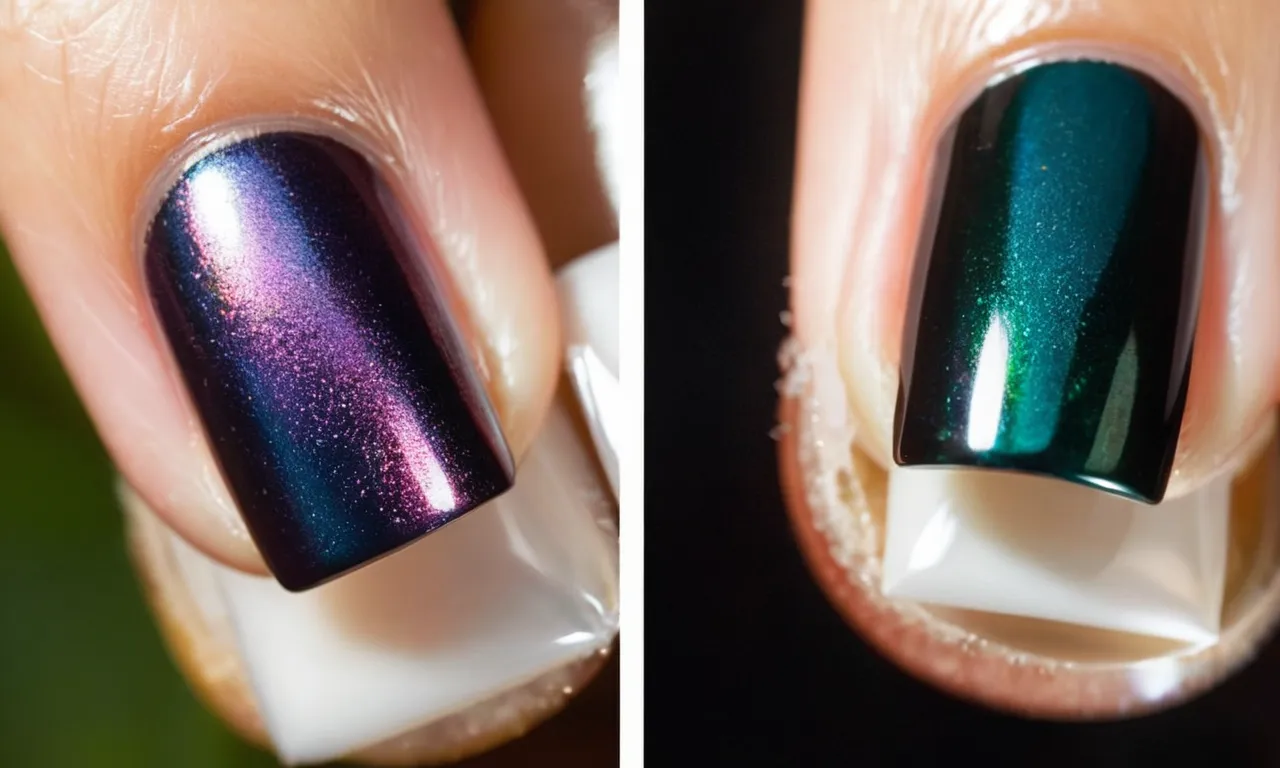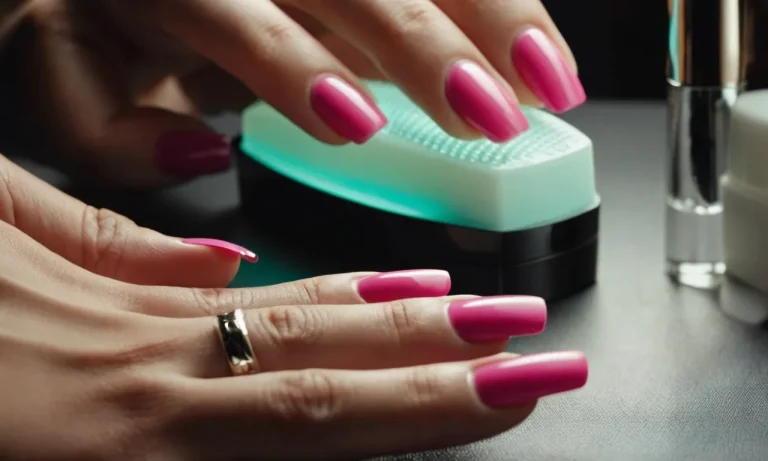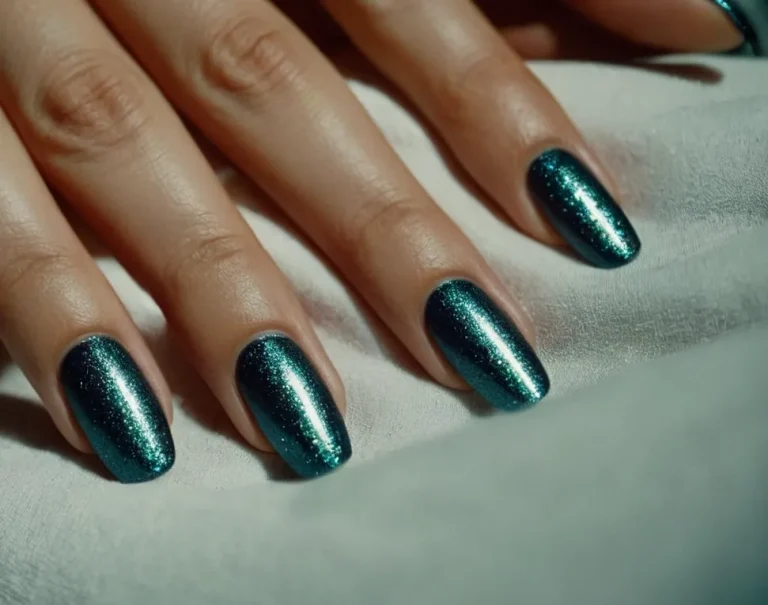Coconut Oil For Nails Before And After: Does It Really Work?
Getting long, strong nails that look great can be a challenge. Many people turn to coconut oil, touting its moisturizing and nourishing properties. But does slathering your nails in coconut oil really transform them? Let’s take an evidence-based look at the effects of coconut oil on nails.
If you’re short on time, here’s the quick answer: Research shows that coconut oil can help strengthen brittle nails and cuticles when used regularly. It provides fatty acids, vitamins, and antioxidants to nourish nails. However, coconut oil alone may not be enough to transform problem nails.
Using it along with other treatments and nail care best practices leads to the best results.
How Coconut Oil Can Help Nails
Moisturizes Dry, Brittle Nails
Coconut oil is an excellent moisturizer for dry, brittle nails. It contains fatty acids that help retain moisture in nails and cuticles. Massaging nails and cuticles with coconut oil every day can improve nail flexibility and strength over time.
According to a study published in the Journal of Cosmetic Science, coconut oil was more effective at reducing water loss from skin compared to mineral oil due to its occlusive properties.[1]
The moisturizing benefits of coconut oil come from compounds called medium-chain triglycerides (MCTs). When applied topically, MCTs form a protective barrier on the nails that locks in moisture. This can prevent cracks, chips, and peeling.
Softens Cuticles
Coconut oil is an intensive natural moisturizer that can soften hard, rough cuticles. Gently massaging coconut oil into the cuticles helps loosen and push back cuticle skin. This helps maintain neat, healthy-looking nail beds.
One study found that a nanoemulsion containing coconut oil was effective at reducing cuticle roughness. After 4 weeks of use, cuticle roughness decreased by nearly 44%.[2] The researchers concluded that coconut oil absorbs well into the nail plate and softens the cuticle area.
Contains Beneficial Nutrients
Coconut oil provides vitamins, minerals, and antioxidants that support strong, healthy nail growth. It contains iron, zinc, calcium, magnesium, phosphorus, selenium, and manganese.[3] Iron and zinc aid keratin formation to build tough nails, while antioxidants like vitamin E fight damage from free radicals.
One key nutrient coconut oil provides is lauric acid. Research shows that when lauric acid is converted into its derivative form called monolaurin, it has antimicrobial effects against common nail infections.[4] This suggests coconut oil may help prevent fungal and bacterial nail infections.
Here is a comparison of the nutrients in 1 tablespoon (14g) of coconut oil versus sunflower oil:[5]
| Coconut Oil | Sunflower Oil | |
|---|---|---|
| Iron | 0.7% DV | 0% DV |
| Zinc | 0.5% DV | 0.2% DV |
| Vitamin E | 3.8% DV | 29% DV |
| Magnesium | 0.7% DV | 0% DV |
As you can see, coconut oil provides modest amounts of nutrients that specifically benefit nail health.
Using Coconut Oil on Nails Before and After
As a Daily Moisturizer
Applying coconut oil to nails daily can have tremendous benefits for the health and appearance of nails. The lauric acid and vitamin E in coconut oil help deeply moisturize nails and cuticles, preventing hangnails and dry, brittle nails.
Many people swear by rubbing a little coconut oil into nails and cuticles each morning and night. This helps strengthen nails, stimulates growth, and leaves nails looking shiny and healthy. Using coconut oil as a daily nail treatment can also help prevent fungal infections.
With Other Treatments
Coconut oil can enhance other nail treatments as well. For example, mixing a few drops of coconut oil into a bowl with olive oil and soaking nails for 10-15 minutes is an amazing hydrating treatment. Coconut oil also combines well with essential oils like tea tree, lavender, or lemon to make anti-fungal or nail-strengthening soaks.
Rubbing coconut oil over nails after removing polish helps rehydrate. Many people even add a little coconut oil to their nail polish remover to counteract the drying effects of acetone. Using coconut oil with other treatments leverages its moisturizing and anti-fungal abilities for visibly stronger, shinier nails.
As a Removal Aid
Coconut oil can also aid in gently removing gel manicures or acrylic nails. Rubbing pure coconut oil over artificial nails for 5-10 minutes before removal helps weaken the nail bonds for easier removal, preventing damage to natural nails underneath.
The moisturizing properties of coconut oil also helps counteract the drying effects of nail polish removers. Many people use coconut oil to remove mascara as well, so it is gentle enough for delicate skin around the eyes and nail bed.
Coconut oil is affordable, free of harsh chemicals, and moisturizes while removing gels/acrylics. Just apply coconut oil liberally before removal, let it soak in for a few minutes, wipe away any excess, then gently work off artificial nails.
The oils help loosen the bonds, preventing chipping or peeling of natural nails.
Coconut Oil Nail Treatments and Recipes
Simple Coconut Oil Soak
Soaking nails in virgin coconut oil is an easy way to nourish and moisturize them (1). Simply pour some oil into a small bowl, soak fingertips for 5-10 minutes, and gently massage each nail and cuticle.
The medium-chain fatty acids like lauric acid found in coconut oil help soften dry, brittle nails (2). Repeat daily or several times per week for best results. Many users report nails growing stronger, longer and healthier after regular coconut oil soaks.
Coconut Oil and Honey Mask
Mixing coconut oil with raw honey creates a luxurious nail conditioning mask. Honey is a natural humectant that helps hydrate nails and cuticles (3). Combine 1 tablespoon each of melted coconut oil and honey, apply to nails and cuticles, and let sit for 10-15 minutes before rinsing off.
The antifungal and antimicrobial properties in this combination help combat nail fungus and other infections as an added benefit (4). For intensive treatment, wrap nails in plastic wrap or wear cotton gloves after applying the mask to lock in moisture.
Coconut Oil Cuticle Softener
Coconut oil can be dabbed onto cuticles to soften and hydrate them. Dry, cracked cuticles are prone to hangnails and infection. Gently rub a drop of melted coconut oil into each nail cuticle before bed.
The lauric acid and vitamin E will go to work softening and improving cuticle health as you sleep (5). In the morning, rinse off any remaining oil with warm water. Regular application helps train stubborn cuticles to lie flat and look neat.
Combining coconut oil with beeswax or shea butter boosts the moisturizing effects.
Research shows that compositions containing coconut oil are effective at reducing split ends, brittleness, roughness and dryness when applied topically on hair (6). Though more research is needed, it’s likely that coconut oil offers similar moisturizing and strengthening effects when used on dry, brittle nails due to its unique fatty acid profile.
With its pleasing tropical scent and versatility, coconut oil is worth experimenting with to enhance nail health and beauty.
References:
- https://www.ncbi.nlm.nih.gov/pmc/articles/PMC4892344/
- https://www.ncbi.nlm.nih.gov/pmc/articles/PMC5037021/
- https://www.sciencedirect.com/topics/agricultural-and-biological-sciences/humectant
- https://www.ncbi.nlm.nih.gov/pmc/articles/PMC3803629/
- https://www.ncbi.nlm.nih.gov/pmc/articles/PMC4892344/
- https://www.ncbi.nlm.nih.gov/pmc/articles/PMC5037021/
Proper Nail Care for Best Results
Avoid Picking and Peeling
Picking at or peeling your nails can lead to damage and infection. Try to resist the urge to pick, and use a file to gently smooth any rough edges. Keeping nails trimmed short can also remove temptation. Consider wearing bandages or gloves when you might be prone to absentminded picking.
Trim and File Gently
Use sharp manicure scissors or clippers to trim nails straight across, then gently file the edges with an emery board. Don’t cut cuticles or trim too short, as this can lead to ingrown nails. After filing, use a buffing block or buffing cream to smooth and shine the nail surface.
Wear Gloves for Wet Work
Wearing gloves when washing dishes, cleaning, or using harsh chemicals can help protect nails from damage and drying. Look for waterproof vinyl or nitrile gloves to limit water exposure. Cotton-lined rubber gloves help absorb moisture while also offering protection when using cleaners.
Take Biotin Supplements
Biotin is an essential B vitamin that helps produce keratin, a protein that makes up your hair and nails. Taking a daily biotin supplement can strengthen brittle nails. Aim for 2,500-5,000 mcg of biotin per day.
Check with your doctor before starting any new supplement, especially if you take medication.
With some simple nail care habits like avoiding damage, moisturizing cuticles, and taking supplements, coconut oil can better absorb into nails and cuticles for maximum strengthening and growth benefits. Consistent gentle care will prepare nails for optimal coconut oil treatment.
Conclusion
While research shows coconut oil can strengthen nails and cuticles, it works best when combined with proper nail care habits. Apply it daily along with treatments like biotin supplements and gloves for wet work. Coconut oil soak and mask recipes help enhance its benefits.
With consistent use and care, you may seeimprovement in the appearance and health of your nails over time.







